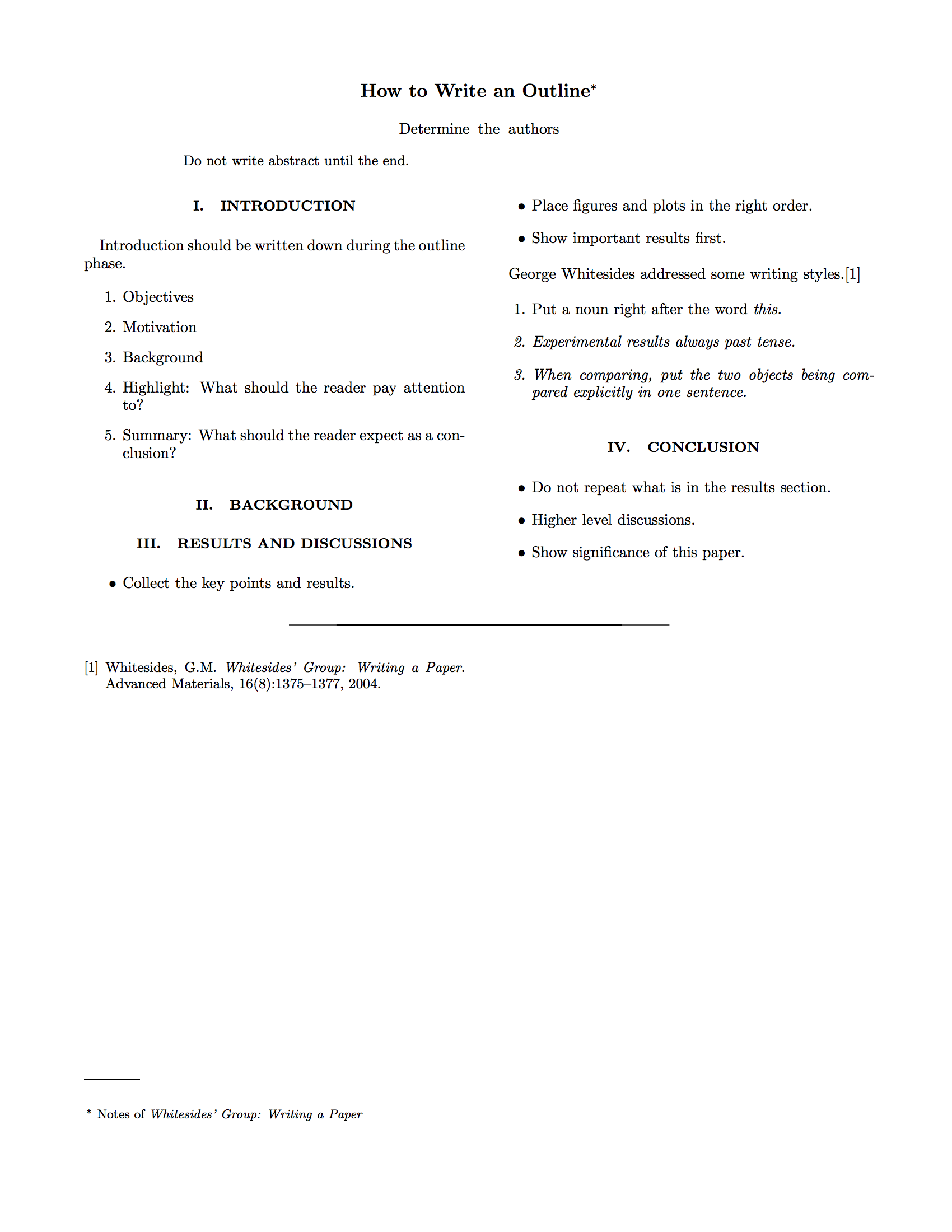Writing a Paper
Reference
Questions to Self
- Why this research?
- What hypothesis if any?
- What methods?
- What results?
- How good are the results?
Procedure
Start writing during the research, as soon as the basic structure is clear.
Outlines
The first step is to formulate outlines.
- List all hypothesis, points, data, results, and many more, on a piece of paper.
- Organized them into some storyline.
- For each part of the story, try to put in some simple details. (No need to write abstract at this point.)
- Hand them to advisor and get feedback. Repeat untill everyone agree on the outline.
I love this part of the paper:
Do not, under any circumstances, wait until the collectionof data is “complete” before starting to write an outline. Noproject is ever complete, and it saves enormous effort andmuch time to propose a plausible paper and outline as soon asyou see the basic structure of a project.

The TeX code for this template is shown below.
\documentclass[%
reprint,
amsmath,amssymb,
aps,
]{revtex4-1}
\usepackage{graphicx}% Include figure files
\usepackage{dcolumn}% Align table columns on decimal point
\usepackage{bm}% bold math
\begin{document}
\title{How to Write an Outline}% Force line breaks with \\
\thanks{Notes of \em{Whitesides' Group: Writing a Paper} }%
\author{Determine the authors}
\begin{abstract}
Do not write abstract until the end.
\end{abstract}
\maketitle
\section{\label{introduction}Introduction}
Introduction should be written down during the outline phase.
\begin{enumerate}
\item Objectives
\item Motivation
\item Background
\item Highlight: What should the reader pay attention to?
\item Summary: What should the reader expect as a conclusion?
\end{enumerate}
\section{\label{background}Background}
\section{\label{results}Results and Discussions}
\begin{itemize}
\item Collect the key points and results.
\item Place figures and plots in the right order.
\item Show important results first.
\end{itemize}
George Whitesides addressed some writing styles.\cite{Whitesides2004}
\begin{enumerate}
\item Put a noun right after the word \em{this}.
\item Experimental results always past tense.
\item When comparing, put the two objects being compared explicitly in one sentence.
\end{enumerate}
\section{\label{conclusion}Conclusion}
\begin{itemize}
\item Do not repeat what is in the results section.
\item Higher level discussions.
\item Show significance of this paper.
\end{itemize}
\medskip
\begin{thebibliography}{9}
\bibitem{Whitesides2004}
Whitesides, G. M.
\textit{Whitesides' Group: Writing a Paper}.
Advanced Materials, 16(8):1375--1377, 2004.
\end{thebibliography}
\end{document}